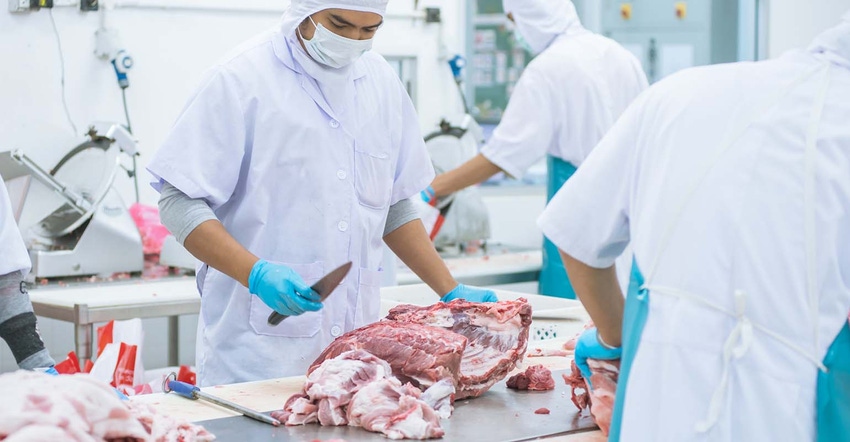August 2, 2018

Some meat processing facilities are struggling to keep doors open amid low unemployment rates, new facilities coming online and a shrinking pool of available labor. RaboResearch animal protein analyst Christine McCracken says that when meat processing reaches its typical peak this fall, not having all facilities running at full capacity may cause an over-supply of live animals for the market.
For livestock producers, that situation could translate into lower market prices.
“At the moment, the pork industry is seeing a tighter supply of workers in its processing sector. This reflects not only very low national unemployment rates but also the recent addition of four new slaughter plants in relatively rural areas with even tighter labor supplies,” McCracken said.
A recent RaboResearch report, “Animal Protein’s Labor Pains: Industry Bottleneck or Game-Changer?” explores the employment challenges for the meat processing industry and weighs possible solutions. Long-term fixes may include integrating more automation, moving facility locations to areas with more abundant labor pools, or developing more attractive employee and workplace benefits. But in the short term, companies are struggling to recruit and retain workers.
“As packers compete for the same workers, we have seen turnover increase by as much as 50% in the past year,” McCracken says. “We expect the pork industry to suffer first, but the broiler industry will soon follow. With as many as nine new plants and plant expansions underway that will require even more workers in the upcoming 18-24 months, we anticipate turnover and recuitment challenges that will stress the broiler market.”
In juxtaposition to the employment woes of the meat processing industry, U.S. farmers have increased animal production by 8% over the last two years in anticipation of continued growth in consumer and export demand.
“The long-term need to supply the meat products that consumers want is at the center of this challenging labor situation,” McCracken says. “There will be winners and losers in companies’ abilities to recruit and retain workers, automate, and adapt supply chains. In the short-term, the entire supply chain – including pork and poultry producers – will feel the pinch economically.”
Source: Rabo AgriFinance
You May Also Like




